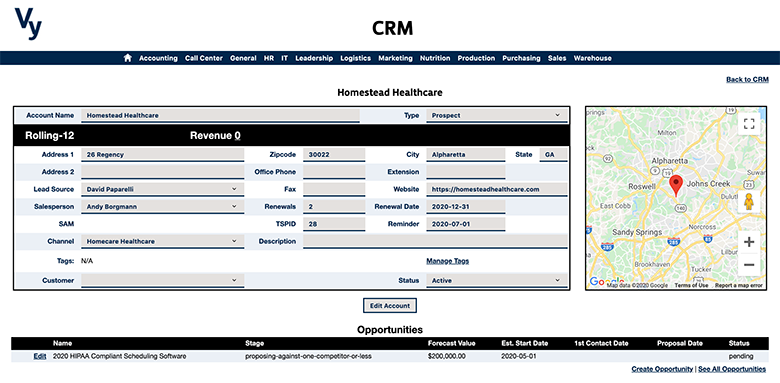ART Framework™
Vy Technology utilizes a proprietary Apps/Report/Task (ART) Framework™.
It is a business first, technology second framework.
This framework is designed to build web based, SaaS applications in a highly efficient and segmented process.
It builds on the AGILE development concept, but in a manner that we refer to as Hyper-AGILE.
While other Hyper-AGILE environments could be synonymous with "poor work" or "potential security issues," our ART Framework has a 20 year track record across multiple industries ensuring the highest quality (and secure) technology innovation in the shortest amount of time.
The efficiency gained from this framework is then passed on as savings and flexibility to our customers.
To best understand the ART Framework, it is important to define what each ART Element™ is.

Apps are elements within the framework that would manage and manipulate data.
This could be both master or transactional data.
Adding fields for Apps is as easy as adding a database field and the ART Framework takes it from there.
Examples of Apps master data would include elements like CRM, Vendors, Locations/Warehouses, Menus, Recipes, Users, etc.
Examples of Apps transactional data would include elements like Purchase Orders, Inventory Postings, Production Orders, EDI Submissions, Item Ledgers, Billing Applications, etc.
Reports are elements within the framework that retrieve and use data. The nature of our ART Framework enables users to run their own reports ad-hoc and in real time. These reports are accessible anywhere the application is accessible and can be downloaded (if desired) into common Microsoft Excel formats (i.e. XLSX or CSV). Examples of Reports would include P&L, Territory Sales Plan, Menu Costs, Menu Nutritionals, Shopping Lists, etc.
Tasks are elements within the framework that automatically execute processes on some predetermined frequency. Examples of this would include a Report that runs nightly and gets emailed to a certain group of individuals. Another example would be an App/process that resets certain parameters in batch every month. Just about anything within the ART Framework can be automated by a Task.
Currently we have 504 different ART Elements in use and ready to use in your environment. Likely no matter what you are in need of, we have a solution ready to go. But even if we don't, the ART Framework enables quick development of any solution you need.
For security, in addition to many other controls, the ART Framework utilizes the Principle of Least Privilege for user access. Everyone accessing the system has an individual username (usually email address) and password. These users are then assigned Read/Write/Delete privileges to Apps individually. Those with read access can access the application data; those with write access can manipulate the application data, but not remove it; those with delete access can manipulate and remove application data. Reports have controlled access as well. This ensures that users only have access to do the job tasked to them, and is a data integrity control within large groups.
Reports are elements within the framework that retrieve and use data. The nature of our ART Framework enables users to run their own reports ad-hoc and in real time. These reports are accessible anywhere the application is accessible and can be downloaded (if desired) into common Microsoft Excel formats (i.e. XLSX or CSV). Examples of Reports would include P&L, Territory Sales Plan, Menu Costs, Menu Nutritionals, Shopping Lists, etc.
Tasks are elements within the framework that automatically execute processes on some predetermined frequency. Examples of this would include a Report that runs nightly and gets emailed to a certain group of individuals. Another example would be an App/process that resets certain parameters in batch every month. Just about anything within the ART Framework can be automated by a Task.
Currently we have 504 different ART Elements in use and ready to use in your environment. Likely no matter what you are in need of, we have a solution ready to go. But even if we don't, the ART Framework enables quick development of any solution you need.
For security, in addition to many other controls, the ART Framework utilizes the Principle of Least Privilege for user access. Everyone accessing the system has an individual username (usually email address) and password. These users are then assigned Read/Write/Delete privileges to Apps individually. Those with read access can access the application data; those with write access can manipulate the application data, but not remove it; those with delete access can manipulate and remove application data. Reports have controlled access as well. This ensures that users only have access to do the job tasked to them, and is a data integrity control within large groups.
